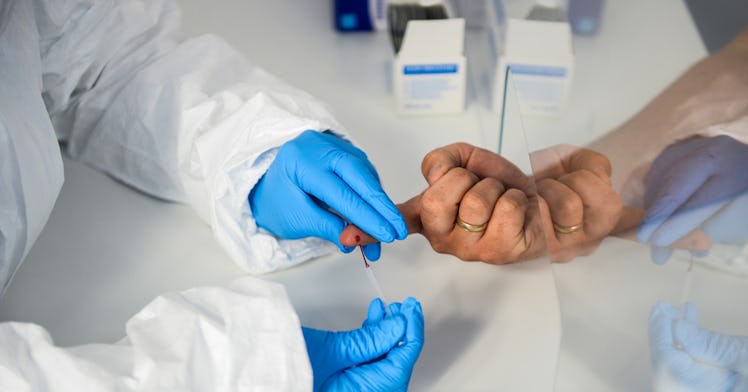CDC Warns Antibody Test Not Entirely Accurate. Experts Suggest Getting Two.
What to make of the CDC warning about the prevalence of false positives from antibody tests.

Up to half of antibody tests for the novel coronavirus may give incorrect results, the Centers for Disease Control and Prevention just announced in new testing guidelines. Before you give up on the test entirely, this number is based on some necessarily rough math. And you can probably get around a false result by getting two tests.
Antibody tests, also known as serological tests, determine if a person has antibodies to the novel coronavirus. Antibodies are part of the body’s natural reaction to getting infected, and there’s not nearly enough evidence to say whether antibodies prevent reinfection by the coronavirus. However, many experts believe they offer short-term immunity, says Dimitri Christakis, the director of the Center for Child Health, Behavior and Development at Seattle Children’s Research Institute. Christakis expects immunity lasts for about a year after infection.
But many antibody test results may be incorrect, according to the CDC. Most of the incorrect results are false positives, which incorrectly say someone has antibodies to the coronavirus when they actually do not. These false positives aren’t cropping up because the tests are wildly inaccurate — though some certainly are. Instead, tests authorized by the FDA, including those with only a slim margin of error, could be churning out wrong results because so few people have had COVID-19. It takes a bit of math to explain why.
The “positive predictive value” is the number of people an antibody test says have antibodies that actually do have antibodies. If this number is 47 percent — like it is for one FDA-authorized test — just over half of the people who test positive may not have antibodies. In another test, about 45 percent of those identified to have antibodies actually do not. However, most FDA-authorized tests have a positive predictive value somewhere between 80 percent and 100 percent.
One caveat: These numbers are strongly affected by the percentage of people in the population with antibodies. For the values listed above, the FDA assumed this prevalence was 5 percent. In most communities, the percentage of people with antibodies is probably anywhere from under 5 percent to 25 percent, according to the CDC. This low prevalence can lead to a higher percentage of false positives in a community.
Even using one of the better antibody tests, the FDA warns not to trust your results. “In low prevalence populations, which will be much of the asymptomatic general population, the result of a single antibody test is not likely to be sufficiently accurate to make an informed decision regarding whether or not an individual has had a prior infection or truly has antibodies to the virus,” according to the FDA. The CDC recommends that, under some conditions, people get two different types of antibody tests to confirm their results.
Americans have placed a lot of hope in antibody testing, or testing for past infection with COVID-19. However, the CDC warns against using antibodies to make decisions about returning to the public sphere: “Serologic test results should not be used to make decisions about grouping persons residing in or being admitted to congregate settings, such as schools, dormitories, or correctional facilities.” Managers also shouldn’t use antibody test results in decisions about employees returning to the workplace, according to the CDC.
Antibodies don’t give you invincibility, but test results will help experts determine how many people have had COVID-19. And if your doctor has high confidence in your results, hopefully, they can give you some peace of mind too.